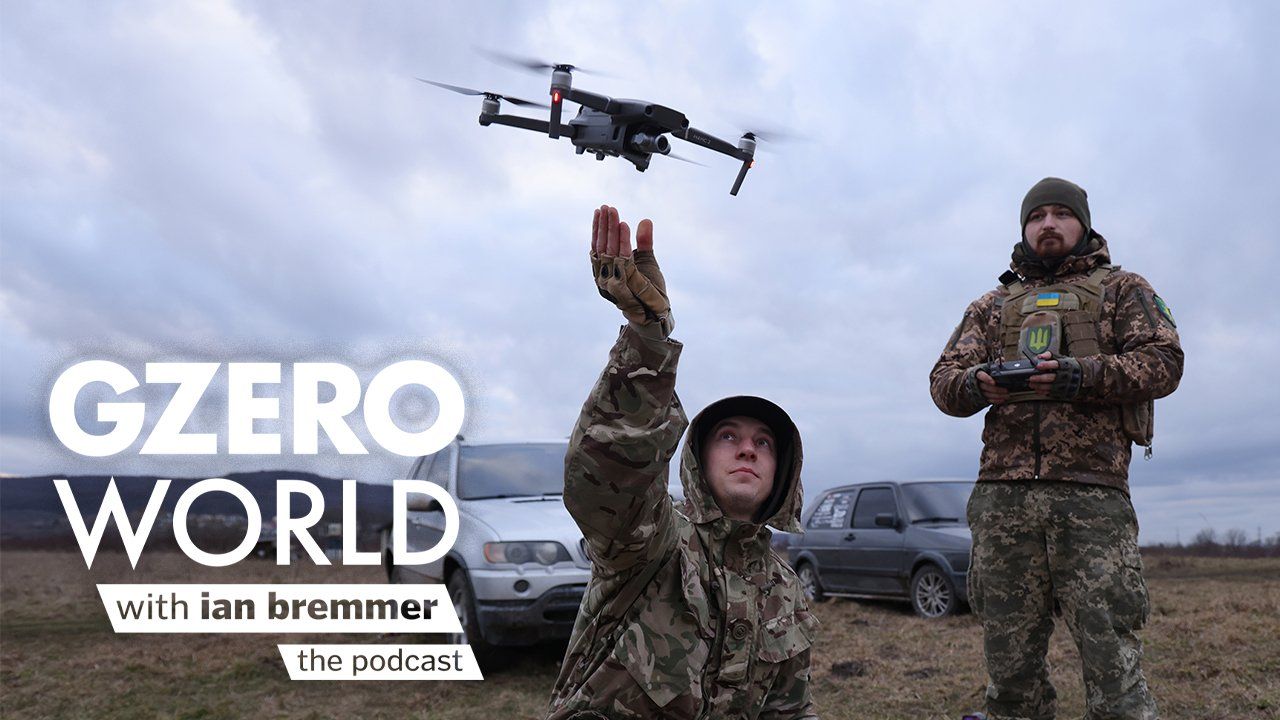The war in Ukraine has entered a dangerous new phase, with Russia sending bigger, more powerful drone attacks across the border nearly every day. Gone are the tanks, columns of troops, and heavy artillery from the early days of Moscow’s full-scale invasion. Now, tens of thousands of drones swarm Ukraine’s skies at any given moment. How much longer can Ukraine hold out? Christopher Miller, chief Ukraine correspondent at the Financial Times, joins Ian Bremmer on the GZERO World Podcast to discuss the war’s evolution from a conventional land invasion into a high-tech war of attrition dominated by drones.
Artificial intelligence, drones, all types of unmanned vehicles are being used to wage war alongside traditional tanks and artillery. Russia's not advancing like it did in the first few months. Now it's inch by inch, meter by meter. Ukraine’s troops are stuck in positions for months at a time, some nearly a year. Civilians in Ukraine’s cities are under constant threat from drone attacks, sheltering in subways and bomb shelters every night. Despite immense resilience, Ukraine’s people are getting exhausted and the country is running out of manpower. Can Ukraine regain its drone advantage? Is a diplomatic ceasefire at all a possibility?
“A lot of people in the west like to say the Ukrainians are so brave, they can do anything,” Miller says, “Many of my friends and soldiers tell me, we're not superhuman. We die, we bleed. There are fewer of us than there were three and a half years ago.”
Subscribe to the GZERO World Podcast on Apple Podcasts, Spotify, Stitcher, or your preferred podcast platform, to receive new episodes as soon as they're published